(CLO) Artificial intelligence (AI) has penetrated the life of journalism so quickly and widely that people have not yet had time to feel it. The ability of journalism to access AI is no longer vague and has become much clearer. The important thing is that newspapers need to determine how to use it to suit their scale and purpose.
Artificial intelligence - an essential part of journalismAfter only about 2 years, since the birth of ChatGPT, which was likened to the “Big Bang”, Artificial Intelligence (AI) is increasingly penetrating the world of journalism, as well as most other areas of life. At this point, it can be said that AI has become an indispensable part of journalism, has been applied widely and very easily. The mark of AI has even been bold in many works that won the 2024 Pulitzer Prize. |
In most industries, the ultimate goal of using AI is to let it do it itself. This is called “automation”, and it can even be to the extent that humans do not need to do anything. However, it must be said right away that in journalism, this automation should only take place partially and in certain jobs, and at the same time, it requires constant human control, and cannot be left to AI to do the job completely, if journalism does not want to destroy itself.
Automation: From video to news articles
Regardless of how things are going, the reality is that automation in journalism is growing stronger and stronger, partly changing the face of world journalism in just the past 2 years. AI has even penetrated into the core professional activities of journalists and newsrooms.
In particular, automation is increasingly being used to create news, and recently, news video production has also been automated. Leading news organizations around the world, including USA Today, NBC, Reuters, and The Economist, have turned to video automation services provided by technology companies such as Wibbitz, Wochit, and Synthesia.
If in the past, to publish a simple news video, newsrooms needed a whole team of journalists and technicians working for a relatively long time to produce a video news report, now they only need one (or a few) AI tools and one staff in a very short time; each day can even produce dozens of videos.
Meanwhile, one German publisher uses an AI robot named Klara Indernach to write more than 5% of its published articles, while other newsrooms have deployed tools like Midjourney or OpenAI's Dall-E to automate graphics.
Obviously, in this era, the press needs to take advantage of AI to speed up the production of news articles in general, and videos in particular, as this is an area where the press is forced to strengthen to compete with social media platforms. Obviously, the press cannot compete with social networks in terms of the number of articles, nor with Big Tech in terms of technology, but using technology to optimize resources has never been unnecessary.
Currently, most major news agencies in the world such as the New York Times, Reuters, CNN or AP are taking full advantage of the video format, almost always including it in articles if possible. Readers not only read, but also always watch videos that are rich in authenticity and entertainment every time they access the news sources of these newspapers. As mentioned, with advanced AI systems, these videos are being processed very quickly, even "in seconds".
Every step can be supported by AI
Of course, automation in journalism is happening in many different ways, with video and news production being just the most prominent and profound examples. AI can also help automate many other parts of the newsroom process.
First, AI technologies can help personalize content – making it more appealing to audiences, and can even help newspapers find more potential readers so they can be encouraged to subscribe.
Examples of this include Argentina’s La Nación, which uses AI algorithms to identify potential readers and nudge them to sign up sooner. Or India’s The Hindu, which uses AI to help refine and develop content and services to appeal to specific audiences. They also have a business newspaper called Business Line, which has a lot of accountants, so they can create a newsletter that’s just aimed at that audience.
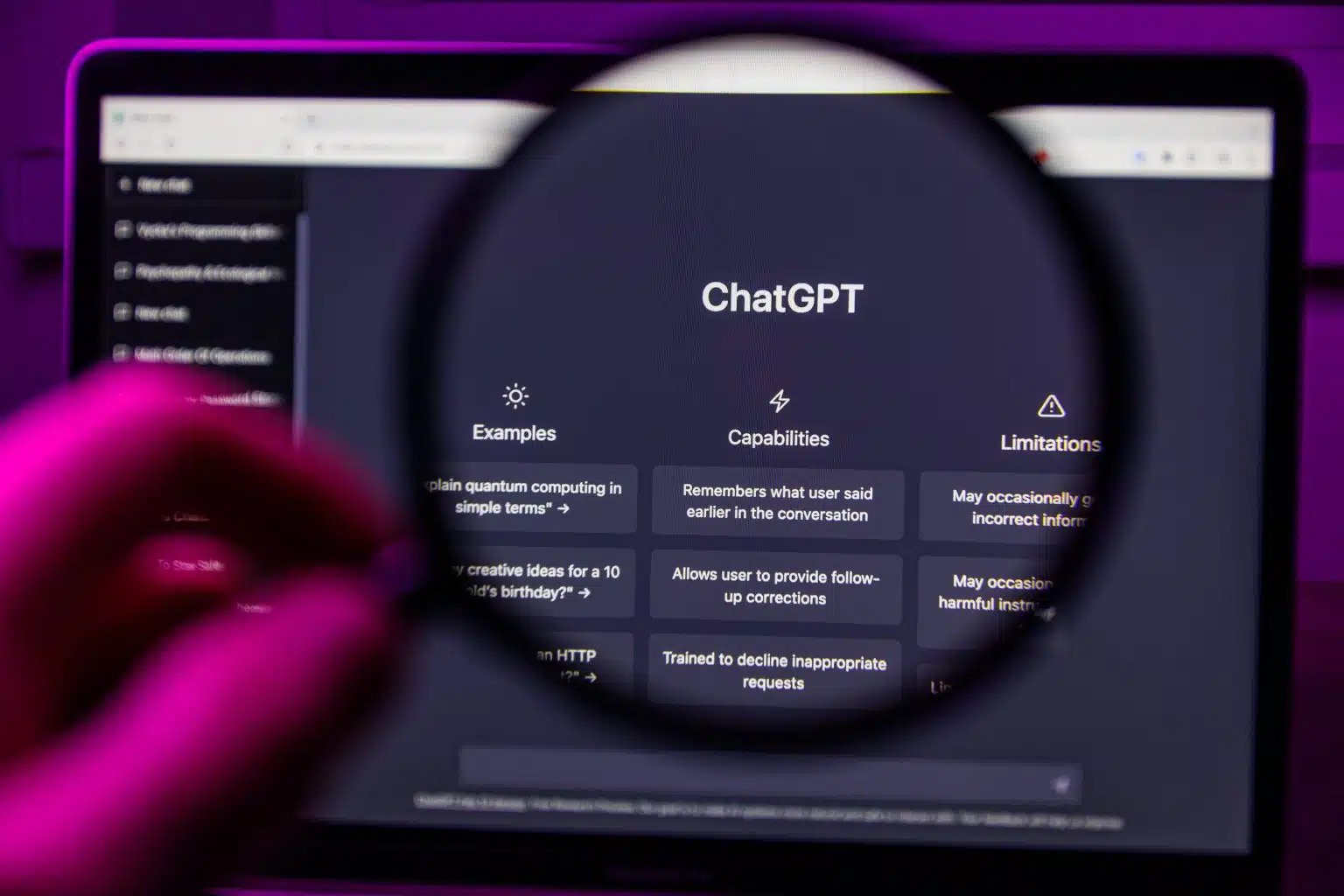
Taking advantage of ChatGPT's features is a simple and effective way for newsrooms and journalists to apply AI to journalism. Photo: GI
Automation is also about using AI to connect with readers themselves. Digital News Report sites in Indonesia, South Korea, Slovakia, and Mexico are using personalized chatbots to interact and respond directly to readers. When reading an article, if readers want to learn more about related information or knowledge, they can ask the chatbot directly, without having to search elsewhere, thereby helping readers stay longer and closer to the site.
Additionally, some radio or television stations are creating AI models to deliver content tailored to specific audiences (where each audience will hear or watch differently). For example, Nat is one of three AI-generated newsreaders from Mexico’s Radio Fórmula, which is used to deliver breaking news based on trends analyzed on social media and news channels.
Meanwhile, the Financial Times (FT) has partnered with Utopia Analytics to bring AI to the task of comment moderation, which used to be so resource- and time-consuming that many news organizations found it difficult to maintain, even if they wanted to. But now advanced AI models can completely take on this “difficult” job.
Thus, it can be seen that AI has gradually become a factor or even a new department to directly participate with the newsroom in almost all journalistic activities.
Anyone can use AI!
But the more important question now is: Is every news organization in the world capable of using AI? Fortunately, the answer is basically “Yes”!
It is true that using an AI system to automate many journalistic processes requires complex techniques and large investments. However, we do not want to turn the newsroom into an automated news production line like in factories!?
Moreover, up to now, newspapers have not necessarily equipped themselves with a team to build their own CMS tools, graphic software or program their own websites, but often use third-party services. The same goes for AI. As mentioned above, even some large news agencies find it difficult (or not necessary) to set up AI models themselves, but often have to use services or partner with technology companies.
What's more important is that even if small newspapers, local newspapers don't have abundant financial resources, using AI to improve their work is still within reach!
Specifically, every newsroom or even every reporter and editor can now use single, readily available and cheap AI tools to serve almost every task in journalism, especially mechanical tasks (such as tape-splitting or statistics), to have more time for creative activities, or at least have more time to rest.
As mentioned, they are cheap and even free, which every newsroom can afford. And they will certainly help greatly to boost speed, quality and efficiency in all stages of journalism.
For example, newsrooms can use Wiseone or PDF.ai to summarize documents. Meanwhile, translation tools are also available in abundance, such as AI chatbots, Google Translate or DeepL. Transcription tools are also very cheap and every newsroom or reporter can equip themselves with them, such as Whisper, Cookatoo, Otter.ai, Good Tape or Pinpoint.
In addition, there are AI tools that can help with headline suggestions, summarizing or visualizing data, analyzing data or videos, writing alt text, and finding research sources for articles. The important thing is whether newsrooms and reporters are willing to use them and actively seek them out!
Even complex issues such as investigative journalism or fighting fake news and misinformation have AI tools to help journalists and newsrooms. There are currently countless AI tools that verify information from text, images to videos or verify robot activities, such as Exorde, FactCheck, Factiverse... As for investigative journalism, uBlock Origin helps track multiple web browsers, RevEye helps search for reverse images or Shodan helps get website information.
All of the above are just a few suggestions in a vast and growing world of AI tools that are available to every journalist and newsroom to help them do their jobs.
Leveraging Big Tech's Own AI
As mentioned, one of the problems of journalism in the AI era is that we must take advantage of the power of Big Tech itself in a fair way, in addition to fighting against their suppression, exploitation or infringement of journalism (such as using unauthorized content).

If the press properly uses chatbots like OpenAI's ChatGPT, Google's Gemini or Microsoft's Capilot, we will also have very powerful AI tools, will not be left behind in the AI era and will not be oppressed by these Big Techs.
In addition to basic functions like summarizing or translating information, ChatGPT can also serve as an impressive topic discovery tool or an assistant in investigations. “Large language models (LLMs) are particularly useful in helping journalists process large volumes of data that they don’t have time to analyze manually. For example, if they receive thousands of public records, LLMs make it easier for them to ask complex, targeted questions about the data and uncover insights faster than traditional methods,” notes Subbu Vincent, Director of Journalism and Media Ethics at Santa Clara University (USA).
Meanwhile, Facebook, TikTok and especially Google are also launching very advanced and specialized AI products and tools for all audiences. If newsrooms and journalists research and apply them properly, they will certainly improve their work. For example, TikTok, Facebook... have features to automatically create subtitles or effects for videos. Meanwhile, Google has a whole arsenal of AI tools that can be used for journalism, from translation, text summarization, transcription... to conference and seminar notes.
Ultimately, as has been emphasized many times, the use of AI in journalism will still only be a tool to improve quality and efficiency. The human factor, creativity and journalistic ethics will still play a core role in the success of every newspaper. Without these factors, no matter how well and how much we use AI, we will lose ourselves and possibly destroy ourselves!
 With AI, UK-based Reach has been churning out around 4,500 articles a day. Photo: Reach From 9 minutes to 90 seconds Reach Media Group, the UK’s largest news publisher, reaching 69% of the country’s online users, has used AI extensively to both boost its news output and reduce its workforce – a much-needed boost in the face of increasingly tight and uncertain newspaper revenue. With its AI models, Reach’s breaking news speed has improved significantly, from 9 minutes to just 90 seconds! As a result, Reach has published around 4,500 articles per day, thereby increasing its advertising revenue significantly. AI is increasingly important to journalism According to the latest AI Journalism Report 2023, jointly conducted by the London School of Economics (LSE), Google News Initiative, and the Polis Institute of Journalism, most newsrooms around the world consider AI to be an important and even indispensable element in journalism. Here are some notable survey results from this report. 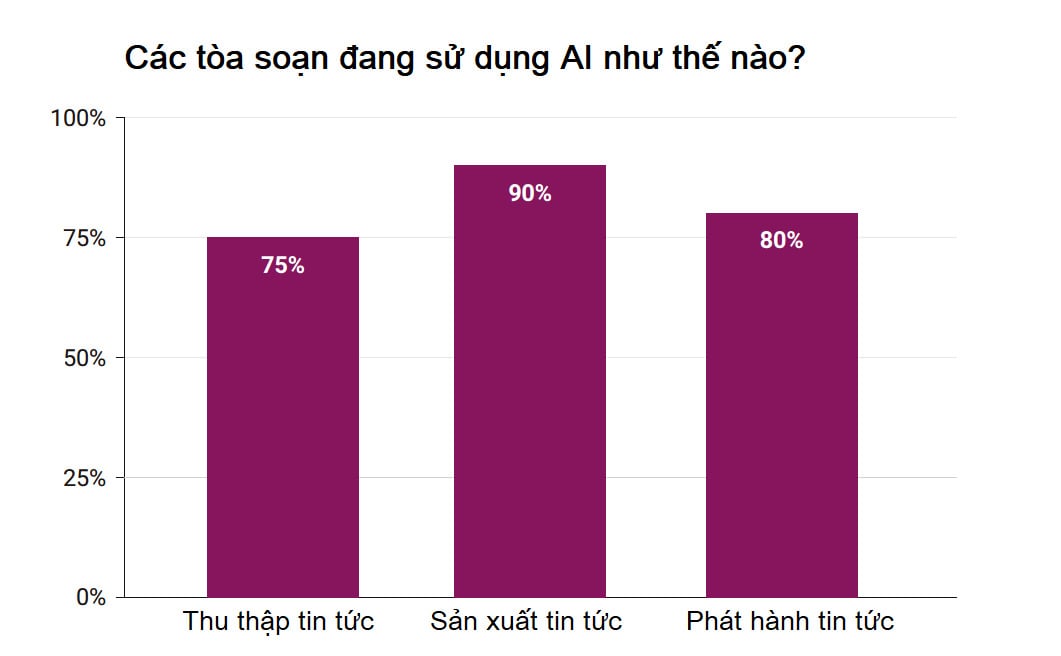 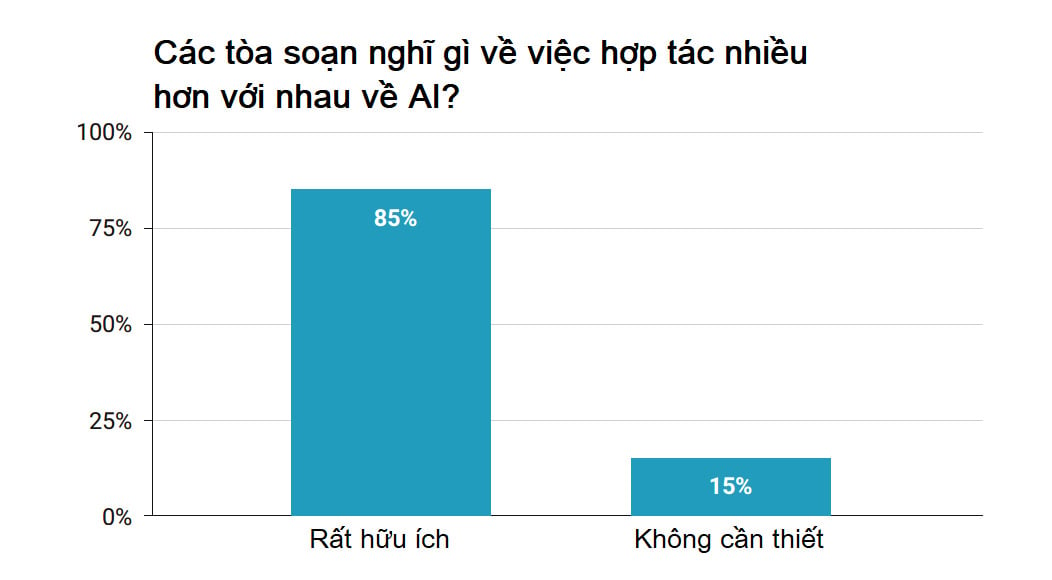 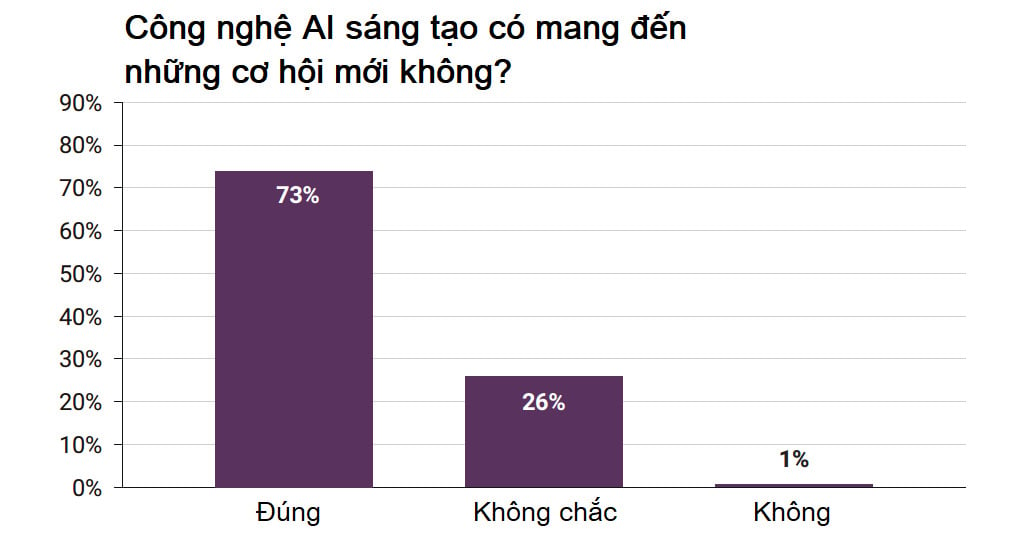 |
Tran Hoa
Source: https://www.congluan.vn/ap-dung-ai-vao-bao-chi-ai-cung-co-the-post330837.html













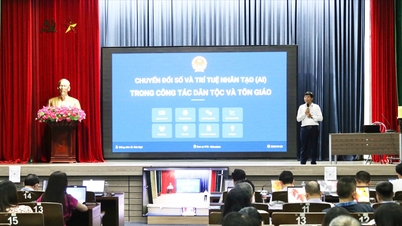
























![[Photo] Panorama of the cable-stayed bridge, the final bottleneck of the Ben Luc-Long Thanh expressway](https://vphoto.vietnam.vn/thumb/1200x675/vietnam/resource/IMAGE/2025/9/30/391fdf21025541d6b2f092e49a17243f)

![[Photo] President Luong Cuong receives President of the Cuban National Assembly Esteban Lazo Hernandez](https://vphoto.vietnam.vn/thumb/1200x675/vietnam/resource/IMAGE/2025/9/30/4d38932911c24f6ea1936252bd5427fa)
































































Comment (0)